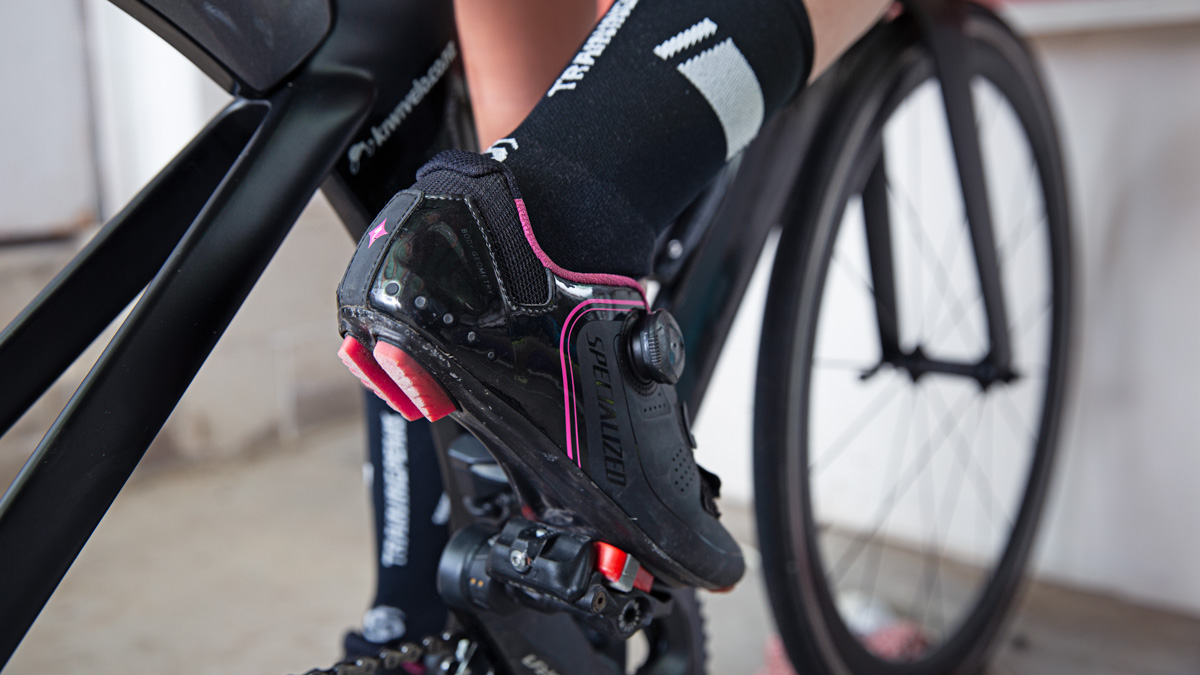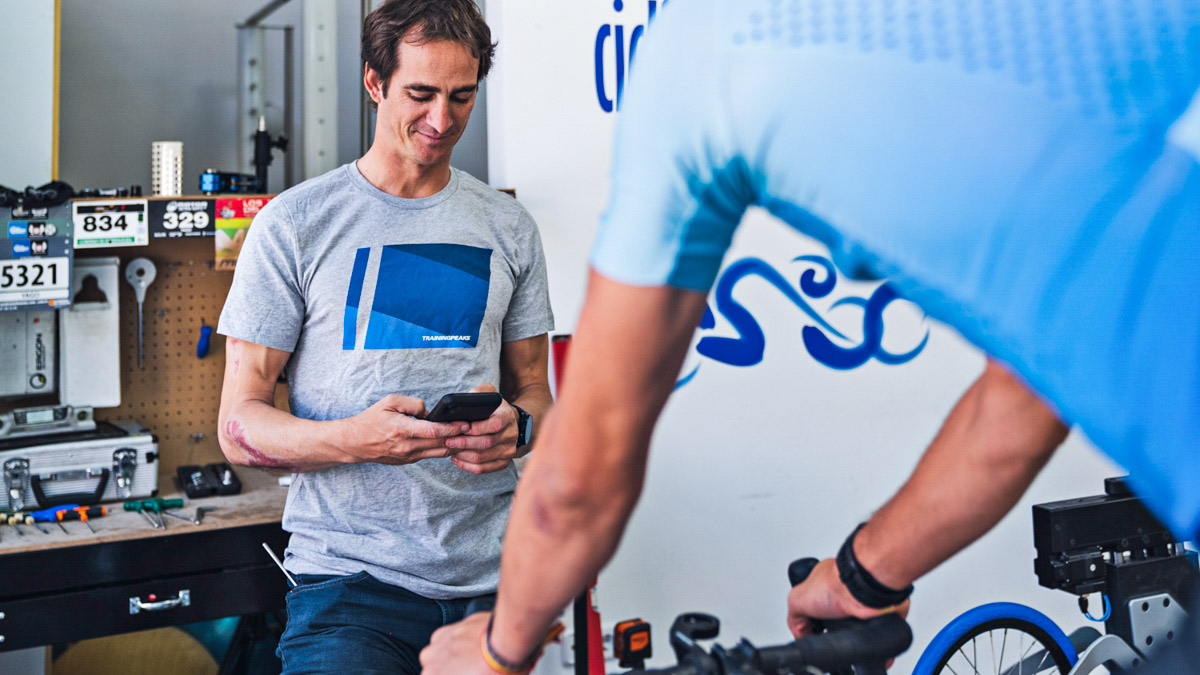When it comes to indoor endurance training, so much emphasis is placed on the physical work of riding that proper nutrition (and its potential to boost performance) often gets ignored. However, the research shows drastic performance differences between athletes who maintain a disciplined nutrient delivery protocol compared to those who don’t. Ready to be one of the former? Here’s how to fuel while riding hard indoors.
Hydrate Before, During and After
It’s very easy to get dehydrated riding the trainer due to the hot environment and limited air circulation for evaporative cooling.
The effects of exercise-induced dehydration on endurance performance are well documented, with several studies showing that just a two-percent reduction of body weight can lead to higher levels of perceived exertion, increased core temperature, and increased cardiovascular strain (5). To avoid these symptoms, you should be aiming to match water intake with your sweat rate.
Try to sip water continually throughout every day, accounting for 50 to 75% of your
Thirsty Yet?
If you’re not, consider this: if the hydration value of your blood plasma dips below a specific level, your body releases hormones that will pull water from urine and the salivary glands to boost the hydration of blood cells. You’ll know this is happening when you get that terrible ‘dry mouth’ feeling.
The hormones responsible, notably antidiuretic hormone (ADH), will also shunt off blood flow from the extremities (i.e. legs!) and force it into the core (4). This sequence of events can reduce your overall power output since blood is needed to provide oxygen and nutrients to those big ol’ quads — and once it occurs, it’s difficult to reverse without decreasing output. Therefore, if you want to maintain optimal performance throughout your ride, it’s important to drink continually and before the sensation of thirst arises!
Drink Your Carbohydrates
For extended bouts of high-intensity exercise, you’ll need to support your glycogen stores by ingesting around 30 to 60 grams of carbohydrates per hour. The most efficient way to accomplish this (and maintain that all-important hydration!) is to drink 12 ounces of six- to
Of course, not all sports drinks are created equal. Traditional drink mixes are often filled with unnecessary dyes and
For a basic homemade drink, try mixing one to two tablespoons of honey, lemon juice (or any citrus), a pinch of sea salt, and a splash of coconut water into a standard bottle of water. The simpler the mixture, the fewer “extra” ingredients your body will have to digest. Other great sources of sweetness for your homemade drink could include maple syrup or pure organic fruit juice mixtures — I personally prefer apple/pear juice mixed with pomegranate. YUM!
Make Your Own Bars
If drinking your calories isn’t your style, you’ve probably got some go-to ride foods. Still, eating the same foods over and over can make them unpalatable or even make you reluctant to eat altogether—and this is especially true of indoor riding, where everything becomes monotonous. Luckily there are lots of unique nutrition options out there to keep your tastebuds interested and keep you fueling properly.
Dates are an excellent carbohydrate source and
Try mashing up a handful of dates and rolling them out with a rolling pin so that you have a date “sheet” or “foundation” about a half-inch thick. Add whichever other ingredients you like, roll everything into a cylinder and cut into bite-sized chunks for easy access and digestion.
This bar is easy to change up when you get bored—try adding coconut, ground nuts, dried cherries, chia seeds, or even savory options like bacon. I personally like a thin layer of nut butter paired with a thinly sliced layer of a water-packed fruit such as honeydew or pineapple.
Optimize Your Protein Intake
Protein plays an important role in both pre- and post-fuel nutrition for endurance athletes. While we don’t typically think of protein as a fuel source during a workout, it has been found that including some protein in your training nutrition plan may help boost performance. Just make sure not to overdo your protein intake during your ride, as this can lead to digestive distress.
Here are some general protein guidelines to follow:
- During Training: ½-¾ grams of protein per pound of bodyweight per day during your training period. Two to three hours before your event, strive to get 10 to 20 grams of high-quality protein in.
- During Your Event: If you are exercising or training for longer than four hours, it’s recommended you get about five grams of protein per hour to help support performance and replenish your body.
- Recovery: Right after your event, you will want to replenish your body by getting about 10 to 20 grams of protein from a post-workout meal.
Conclusion
Hopefully, the information above has given you the ammunition to build better dietary habits and boost your performance over your next long Zwift ride. Remember, any athlete can slog through a workout, but it’s the disciplined athlete who will maximize every detail to enhance performance!









